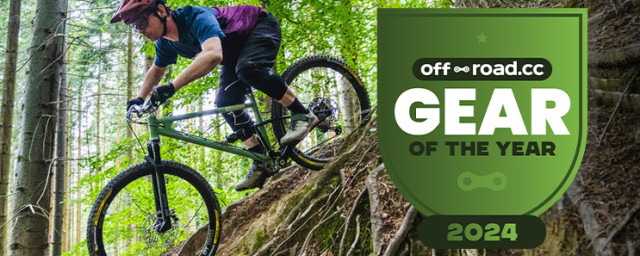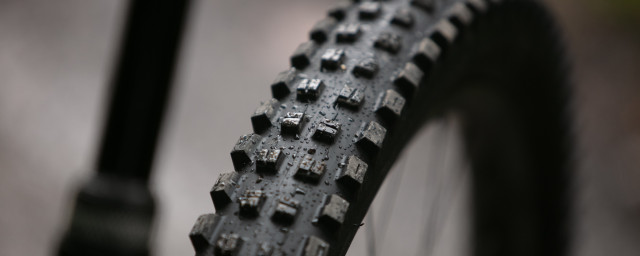The Shimano CUES U8020 four-piston brakes represent good value for money and great performance. The initial costs are reasonable and the longevity and performance are good. Most riders will never need more than what the CUES four-piston brake package delivers. If you’re looking for a well-priced brake system for your e-MTB or hybrid bike and want to save money long-term, look no further.
- ABS MTB Brakes - everything you need to know
- Best mountain bike brakes 2024
- How to clean disc brakes on a bicycle
Shimano CUES U8020 brakes - Technical details
There’s no point getting up to speed quietly and without missing shifts if you can’t slow down again. So to match the Shimano CUES Link Glide U600) groupset I’ve reviewed separately, I was also sent the CUES U8020 brakes for review.
The £175 BR-U8020 box set comes with the BL-U8000 lever and the BR-U8020 four-piston caliper, which is post-mount only. For the UK market, the left lever (rear) comes with a 1,700mm SM-BH90 brake hose – more than enough for the longest bike. The right lever (front brake) comes with a 1000mm hose. The caliper hose fittings are banjo bolts, which allow a degree of hose routing flexibility as they can pivot before being tightened. The pads in the box were the N04C metal pads with cooling fins – an XTR-spec four-piston pad that goes for £43 a set. There’s a resin pad version, too, if you aren’t riding as hard or live in drier conditions.
For this particular braking system, you’re looking at £230 per end for brakes and decent rotors. The lever is Shimano’s ‘three finger’ design – meaning it’s longer than the others. This reflects the CUES emphasis more on ‘trekking’ as they call it and less on all-out MTB performance but, these days, the overall performance is so good and there’s so much cross-pollination of tech features that the lines are getting blurred between what spec fits where. Shimano offers a more budget brake set comprising a two-finger lever and a matching straight-hose-fitting four-piston caliper (the £120 BL-MT501 and BR-MT520 combo) if you want the two-fingered look/feel at a lower price. This also gets you Servo-Wave tech for a quicker bite and is aimed more at the performance end of MTB riding.
Shimano CUES U8020 brakes - Installation
The installation process is a doddle – as the brakes come filled with fluid and ready to trim the brake line and insert into the lever, which is also pre-filled with fluid. The olive is already installed in the lever, so once you’ve measured and cut the hose, it’s a case of driving the barb home then carefully unplugging the lever, pushing the hose in, and engaging the olive. You need to know what you’re doing here but, if done right, you don’t need a subsequent bleed once the hose is torqued at the lever end. If you do spill fluid, a Shimano bleed is no major drama. Noting the U8020 brakes don’t come with a bleed block, so you’ll need one for future work.
Shimano CUES U8020 brakes - Performance
Sticking with the budget ethos of the review, I initially tried the brakes with the £33 SM-RT66 rotors but found these noisy and grabby, likely due to the fact they are stamped and not laser-cut. That stamping process means an ever-so-small lip on the ‘outward’ side where the machine stamps through the steel, and Shimano doesn’t grind it flat afterwards. Whatever the reason, I upgraded the build to the £55 SM-RT86 six-bolt rotors in 203mm size and things got immediately smoother and quieter. These are XT-level rotors so no surprise they work well.
The power of the four-piston CUES 8020 brakes on a 203mm rotor is ample for even a large e-bike being thrown down steep slopes. You get tool-free lever reach adjustment to get the distance from the bar just right, and I had no issues getting a good fit that let me use either one or two fingers, maintaining a good grip on the bars for rowdy trails. Consistent and predictable braking is in line with the CUES ethos of less ragged-edge high-performance, more predictable behaviour, and the U8020 brakes should be seen in this context.
These are brakes that are perfectly applicable to all-out MTB riding. More importantly, they have the power to bring a heavy, possibly child-and-luggage-loaded family bike to a stop with ease. A four-piston caliper is more capable of handling heat buildup and, with a larger pad area can apply more braking force with less pad wear, too, so brake pads should need changing less often. Speaking of which, after 500km of use the pads still look like new, with no wear evident.
For full transparency, I did strike up one issue with the front caliper. During a routine wheel swap from rubber to spiked tyres for some icy rides I noticed one of the pads was worn unevenly. After removing the pads and a piston clean-up I tried pushing the lower piston in but it wouldn’t budge – it turned out the piston had fractured at the back and the ceramic chips were blocking retraction. This would be a warranty claim for a consumer and, while it’s not unheard of, it’s the first time in a decade of servicing bikes I’ve seen it happen. It was a case of bad luck rather than an inherent issue with the product.
Shimano CUES U8020 brakes - Verdict
Shimano's CUES U8020 brakes sit in the middle ground when it comes to value. Spend a little more and you could opt for TRP's Trail EVO brake that summons plenty of power to slow even the weightiest of bikes. The lever feel is great and it uses extra thick rotors which adds bite. These brakes will set you back £180 per end.
But if four-piston braking paired with the touring-friendly two-finger lever is your thing, Magura's MT5 is well worth considering, especially at £95 an end. They might not look as refined but their power is huge.
Overall I’m rather impressed with the CUES U8020 brakeset for e-MTB use. It’s well-priced, it’s largely cross-compatible with other CUES components, and spares are readily available at good prices. The longer levers will be appreciated by those with smaller or weaker hands, or needing to haul very heavy bikes to a stop. But mostly they just work well, aside from the piston fracture.














Add comment